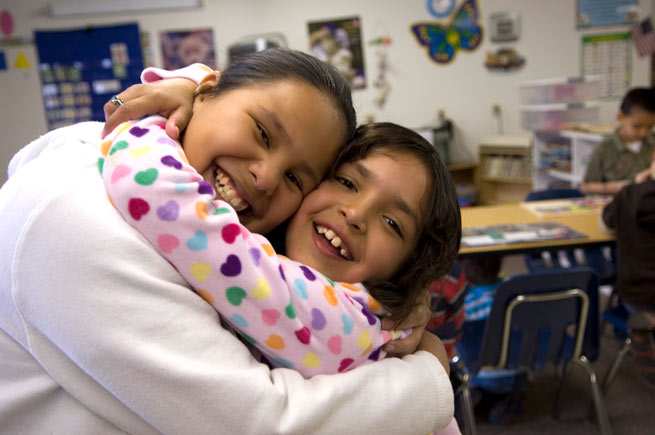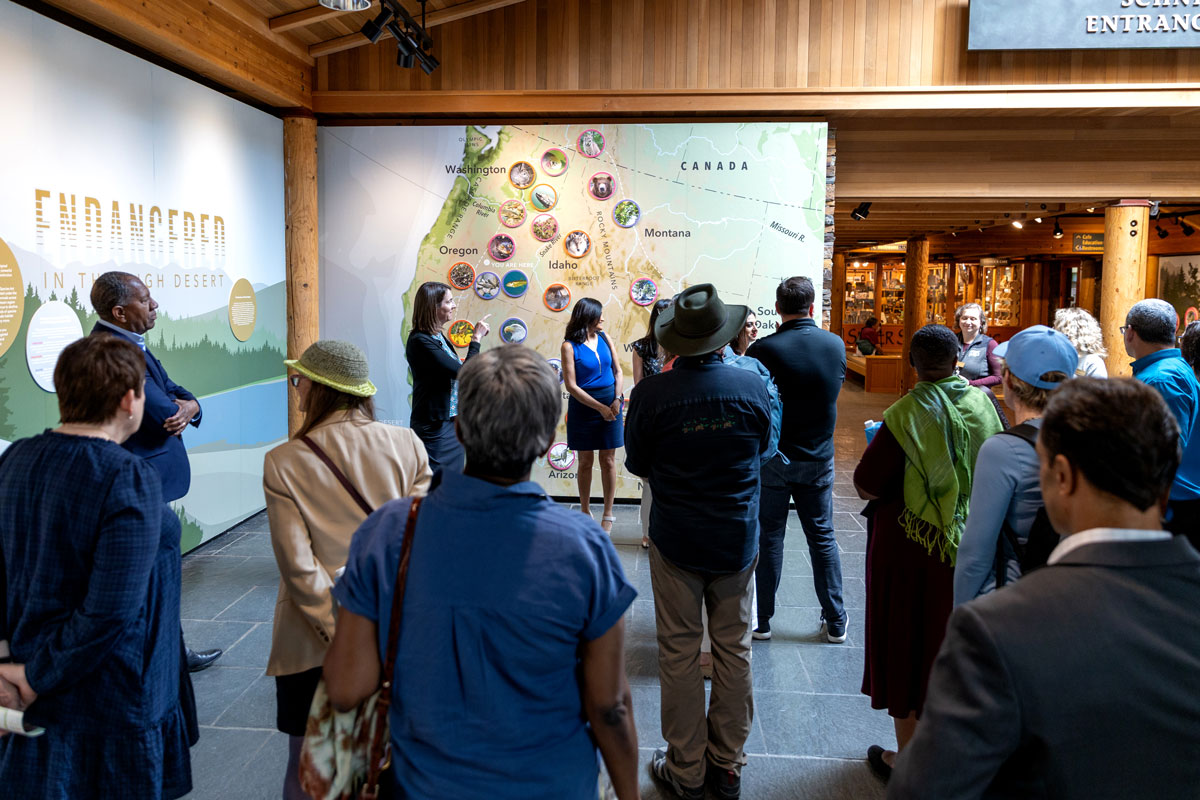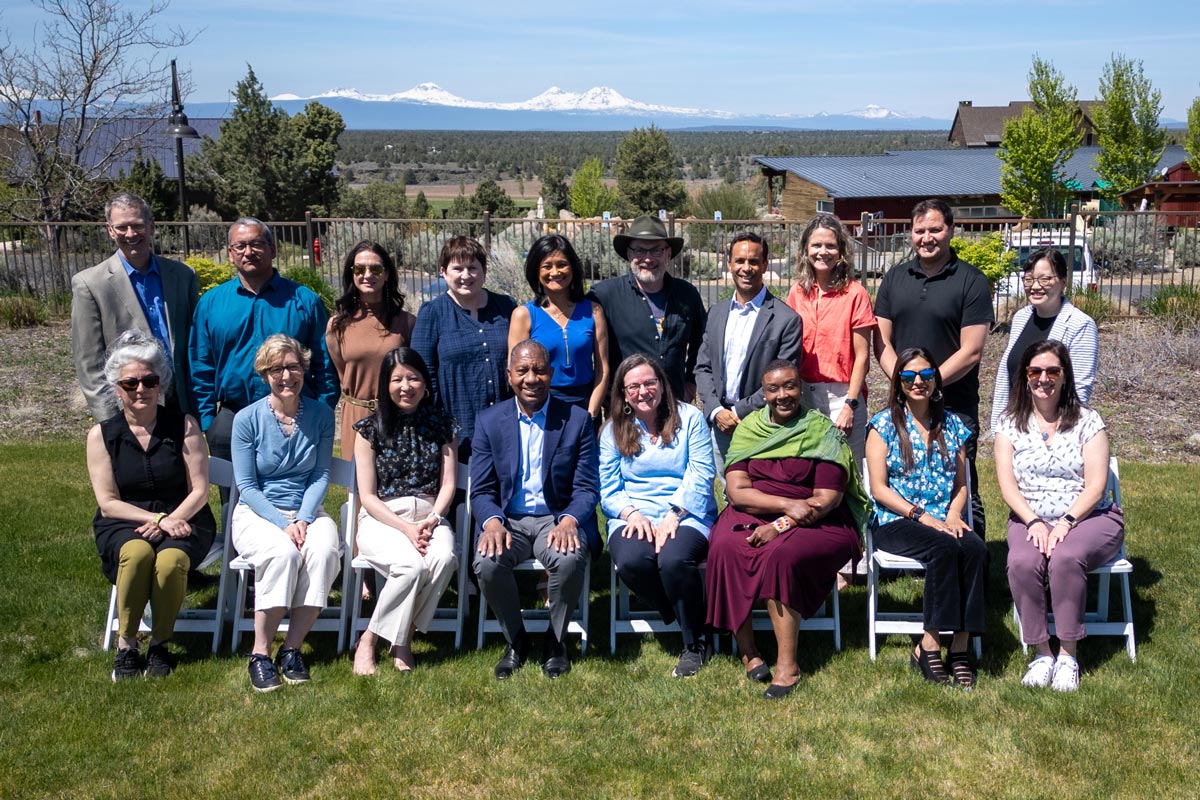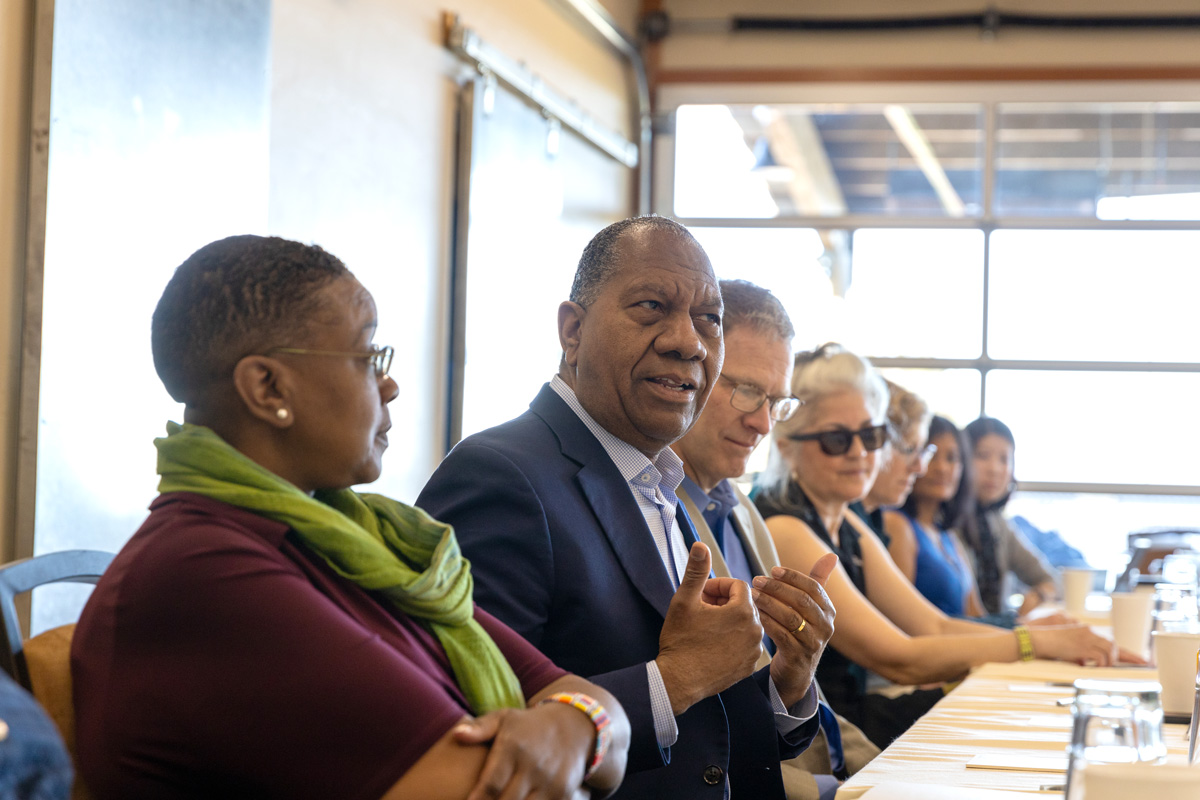NWAF Program Officer John Fetzer shares his thoughts on how DEI extends beyond philanthropy and affects everyone on a personal level, including himself.
I’m a citizen of the White Earth Ojibwe nation. I grew up in Bemidji, MN, a town of about 15,000 people in the middle of three Ojibwe nations—Red Lake to the north, Leech Lake to the east, and White Earth to the southwest. Bemidji is an economic hub for a big swath of the state. Most of its residents are non-Native and white, although it also has a pretty high Native population.
Downtown Bemidji is known for statues of Paul Bunyan and Babe the Blue Ox—folkloric representations of European settlers coming to Ojibwe country to chop down all the trees. Across the street from Paul and Babe is a cartoonish representation of a Native man. Together these statues illustrate the kind of racialized narratives that influence how people and places are perceived. This is part of what we’re up against, and why it’s important to pursue DEI.
Remembering creates a more accurate picture and opens the door to change.
In recent years the city has made strides in becoming more inclusive. It unveiled a statue of Chief Bemidji, the town’s namesake, which features a more historically accurate depiction. Also, a number of businesses in town feature signs that welcome customers in both English and Ojibwe. These actions won’t magically create harmony and prosperity for everyone, but they’re steps in the right direction. They help remind us that indigenous people have lived in this area for a long, long time and contribute to its vibrancy today.
As a kid, I knew I wanted to spend my career, whatever it ended up being, helping Native people—those in my tribe and elsewhere.
Too often Native people are forgotten, and our country’s dominant narrative about Indian Country is incorrect and incomplete. Native people are often portrayed as artifacts of history. And the few mainstream, contemporary representations tend to be one-dimensional stories of poverty, a lack of wellness, and other disparities.
“As a kid, I knew I wanted to spend my career, whatever it ended up being, helping Native people—those in my tribe and elsewhere.”
Embracing the complexity of DEI makes the journey richer and more powerful.
I came to the Foundation because it has an established and ongoing commitment to Native communities that’s rare among funders.
As a program officer, I work to create bridges between the Foundation and the diverse communities we serve. One of the goals of our current DEI process is modeling in the best possible way how grant-makers can build meaningful relationships in Indian Country and communities of color.
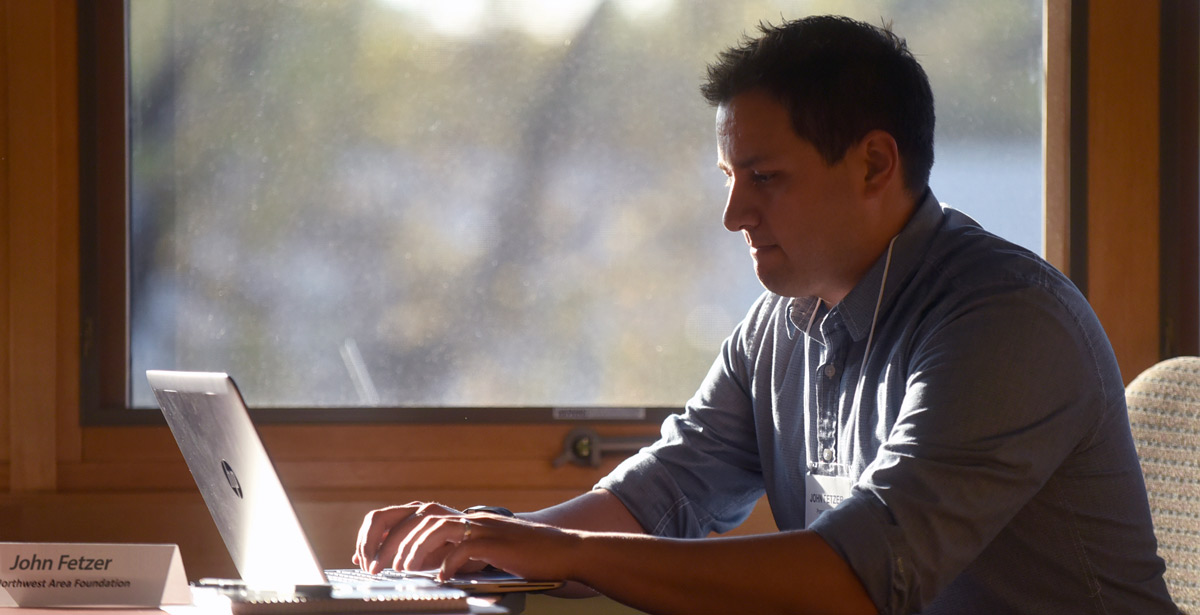
“There’s so much more to the story than is generally portrayed. The communities we serve have incredible people working on amazing—and very different—initiatives. That’s a powerful reflection of the richness of diverse cultures.”
It’s a goal that begins by acknowledging that there’s so much more to the story than is generally portrayed. The communities we serve have incredible people working on amazing—and very different—initiatives. That’s a powerful reflection of the richness of diverse cultures, and it’s a way we can affirm and accommodate our belief that people should thrive on their own terms.
Basing our effort in mission makes the journey navigable.
Right now, philanthropy as a field is putting lots of resources into DEI efforts. Many foundations (ours included) were created by wealthy, white benefactors whose practices and world views shaped the way our sector functions.
In recent years, our Foundation has worked to deepen relationships with organizations led by Native folks and people of color, which has profoundly influenced the ways we currently think and act. Now we’re working to strategically embed DEI throughout our internal culture and systems. I’ve been a part of the eight-person team—under the leadership of Margie Jo Eun Joo Andreason, our DEI manager—shepherding those efforts at the Foundation.
“[DEI] work is central to our mission of supporting efforts that allow people to thrive ‘on their own terms.’ . . . Helping people thrive on their own terms acknowledges there’s no one-size-fits-all outcome for everyone in our region.”
It’s complex stuff, but it’s helpful that we’re not starting from scratch; we’re building on some things we already do, such as our commitment to Indian Country and our focus on the intertwined nature of poverty and racism. Our DEI initiative isn’t an internal, feel-good project aimed toward only creating a better workplace. It’s work that’s central to our mission of supporting efforts that allow people to thrive on their own terms.
Which is a simpler and more actionable place to start. Helping people thrive on their own terms acknowledges there’s no one-size-fits-all outcome for everyone in our region. People have their own definitions of prosperity depending on their own cultures, identities, and value systems. For some, it might mean financial security, but for others it might mean a flourishing language and culture or safety or protection for their family members.
We can learn from our grantees.
Right now I’m particularly encouraged by the efforts and progress of three of our grantee organizations—Cheyenne River Youth Project and Lakota Youth Development, both in rural South Dakota, and The Center Pole in Montana—that work closely with Native youths in ways that help them strengthen their cultural identities.
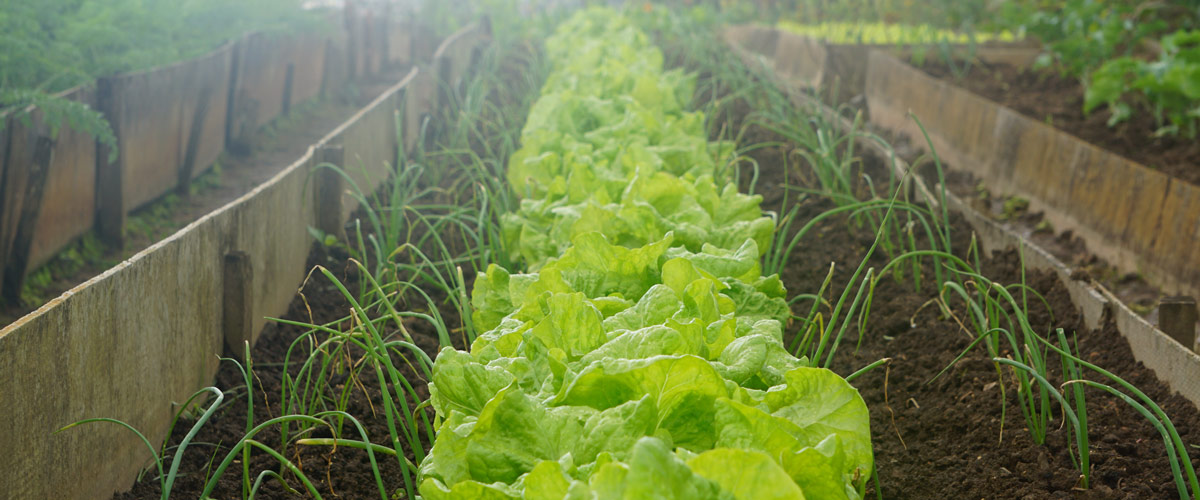
They infuse their after-school and summer programming with tribal ways of being that speak to their cultures as Lakota or Crow peoples. For example, they’re doing some cool work around food—from gardening to preparing it. If we’re going to be healthy people, how do we reconnect with traditional food, and how does that process (and the food itself) nourish and center us?
“If we’re going to be healthy people, how do we reconnect with traditional food, and how does that process (and the food itself) nourish and center us? These are the sorts of questions we want grantees to be asking, and I believe the Foundation’s DEI initiative will help us cultivate and support their self-determined efforts.”
These are the sorts of questions we want grantees to be asking, and I believe the Foundation’s DEI initiative will help us cultivate and support their self-determined efforts. Along the way we’ll have to reevaluate some of things we do internally and externally. We’ll need to have conversations that help us reexamine the ways we’re socialized on racial issues and the ways sociopolitical systems and structures are racialized. We’ll need to be better equipped to work across cultures and be better allies to the numerous cultures and communities in our region.
As an organization and as individuals, we’re walking humbly and with purpose into this effort. I look forward to how it helps us build on the many positive practices we already rely on.
Author
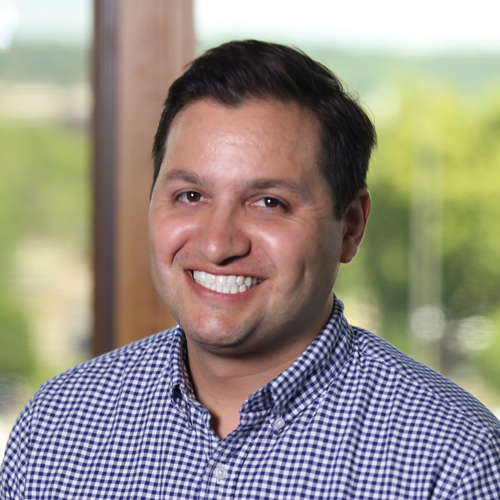
John Fetzer
Program Officer, Northwest Area Foundation
THE THIRD BLOG ENTRY IN OUR SERIES
Insights on Our Journey: A DEI Blog Series
Our Foundation has made a commitment to advance diversity, equity, and inclusion (DEI) in our region. This is the third in our series of blog entries that reports on what our staff are thinking as we make our plans. It’s a way of bringing you, our stakeholders, along as we take this journey.
POST 5
From our DEI Manager Margie Jo Eun Joo Andreason—How Self-Healing Can Be a Powerful First Step
View Post
